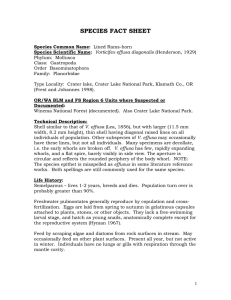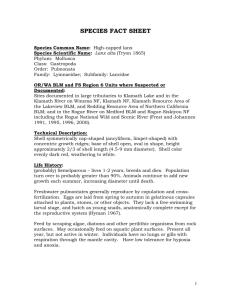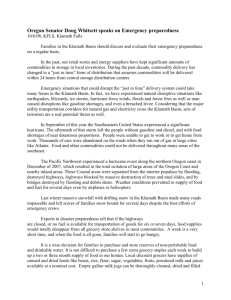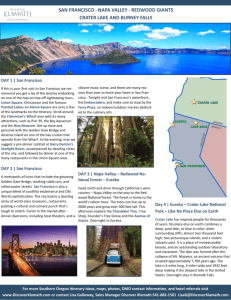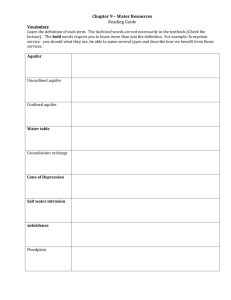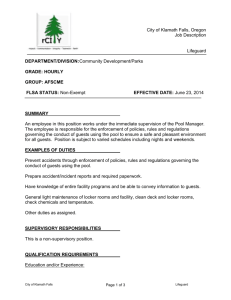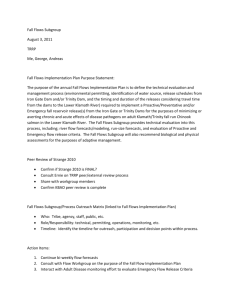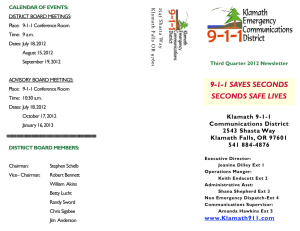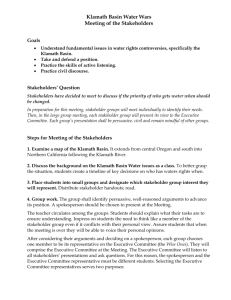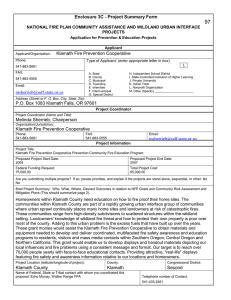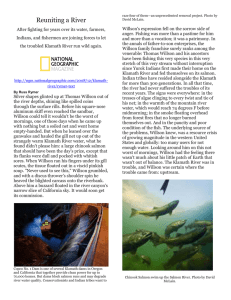SPECIES FACT SHEET
advertisement
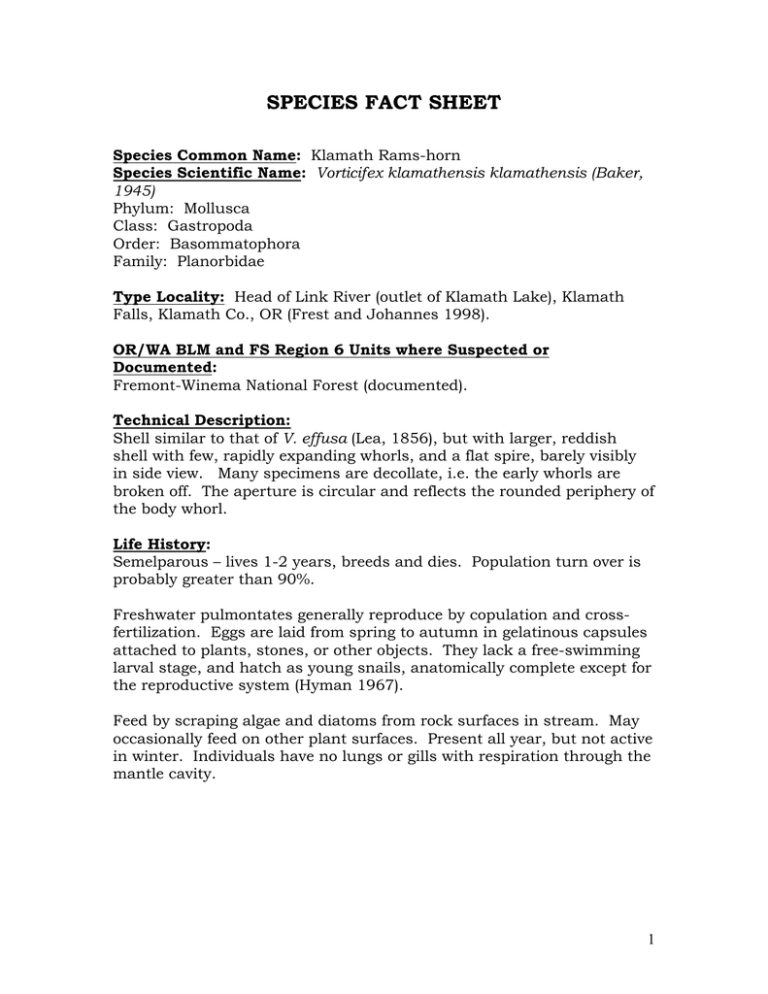
SPECIES FACT SHEET Species Common Name: Klamath Rams-horn Species Scientific Name: Vorticifex klamathensis klamathensis (Baker, 1945) Phylum: Mollusca Class: Gastropoda Order: Basommatophora Family: Planorbidae Type Locality: Head of Link River (outlet of Klamath Lake), Klamath Falls, Klamath Co., OR (Frest and Johannes 1998). OR/WA BLM and FS Region 6 Units where Suspected or Documented: Fremont-Winema National Forest (documented). Technical Description: Shell similar to that of V. effusa (Lea, 1856), but with larger, reddish shell with few, rapidly expanding whorls, and a flat spire, barely visibly in side view. Many specimens are decollate, i.e. the early whorls are broken off. The aperture is circular and reflects the rounded periphery of the body whorl. Life History: Semelparous – lives 1-2 years, breeds and dies. Population turn over is probably greater than 90%. Freshwater pulmontates generally reproduce by copulation and crossfertilization. Eggs are laid from spring to autumn in gelatinous capsules attached to plants, stones, or other objects. They lack a free-swimming larval stage, and hatch as young snails, anatomically complete except for the reproductive system (Hyman 1967). Feed by scraping algae and diatoms from rock surfaces in stream. May occasionally feed on other plant surfaces. Present all year, but not active in winter. Individuals have no lungs or gills with respiration through the mantle cavity. 1 Range, Distribution (Current and Historic), and Abundance: Formerly occurred in the Upper Klamath Lake drainage, including Upper and Lower Klamath Lake and Tule Lake. Currently known from Upper Klamath Lake, and in the Link River at 14 sites. Potential habitats on the Klamath Falls Resource Area, Lakeview BLM, have been surveyed on numerous occasions by Frest and Johannes (1993, 1995, 1998, and 2000) and by PacifiCorp (2004) with no individuals of this species found. Based on the results of these surveys, the Resource Area does not consider this species to be suspected on their unit. Habitat Associations: Found in spring-fed lakes and limnocrenes, as well as large streams with spring influence, although not found in springs themselves. Very cold, highly oxygenated water on stable (boulder-gravel) substrate, in areas with some current velocity. Most sites have abundant large woody debris. Threats: Eutrophication of lake habitats resulting in sedimentation and higher water temperatures; and modification of stream and lake habitats resulting from dredging and channelization for logging and irrigation. Diversion of springs for agriculture, urbanization and domestic water supplies has removed suitable habitat in some locations. Conservation Considerations: (1) Control eutrophication, siltation and pollution, (2) Prevent loss of spring influence resulting from water diversions and ground water removal. Prepared by: Nancy Duncan, April 2008 Edited by: Rob Huff, March 2011 Attachments (1) Range Map (2) References 2 Attachment 1: Range Map: Attachment 2: References Baker, F. C. 1945. The Molluscan Family Planorbidae. University of Illinois Press, Urbana, Illinois, 530 pp. Burch, J. B. 1982. Freshwater snails (mollusca: gastropoda) of North America. Environmental Monitoring and Support Laboratory. U.S. Environmental Protection Agency. Contract No. 68-03-1280. Cincinnati, Ohio. Frest, T. J., and E. J. Johannes. 1998. Freshwater Mollusks of the Upper Klamath Lake Drainage, Oregon. USDI Bureau of Land Management. Contract No. ORFO 092094. Portland, OR. Hyman, L. L. 1967. The invertebrates. Vol VI. Mollusca I. McGrawHill, New York. 792 pp. 3
